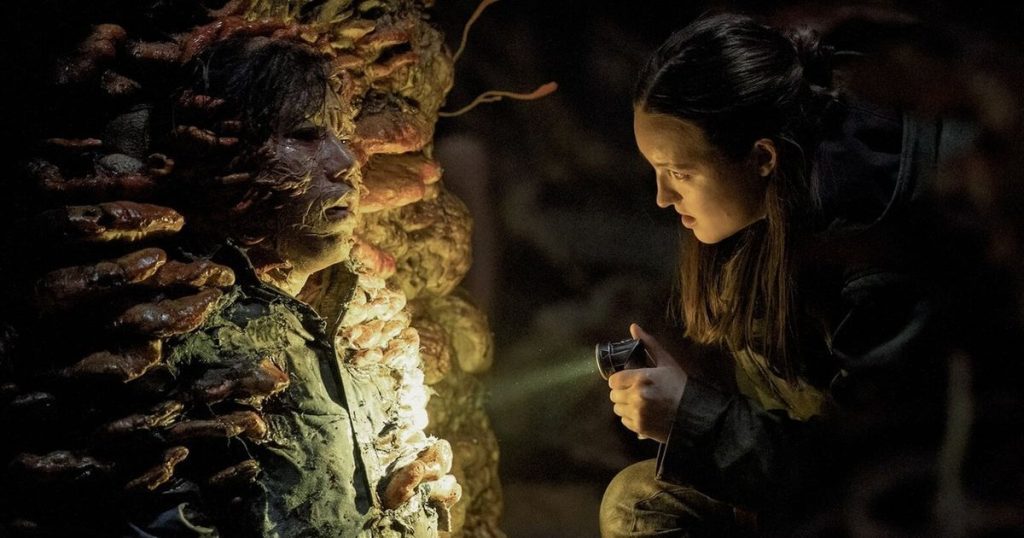world news
Shadows of the Past: Inside The Last of Us Season 2, Episode 5 — “I Can Feel It in the Air Tonight”
Ellie’s Descent into Darkness: Vengeance Becomes Her Compass
Episode 5 of The Last of Us Season 2, titled “I Can Feel It in the Air Tonight,” marks a chilling milestone in Ellie’s transformation. What began as a journey defined by love and loss has now spiraled into a brutal descent fueled by grief and vengeance. The episode kicks off with Ellie continuing her quest to track down the individuals responsible for Joel’s death, a mission that becomes increasingly personal and morally ambiguous. Her target in this installment is Nora, a former Firefly who is now allied with Abby and a key member of the Washington Liberation Front (WLF).
The setting for their confrontation—a decrepit, abandoned hospital in Seattle—reflects the emotional decay Ellie undergoes. The build-up to their face-off is steeped in tension, culminating in one of the series’ most disturbing scenes yet. Ellie corners Nora and, driven by a fevered desire for answers, chooses to torture her for information about Abby’s whereabouts. What’s haunting about this moment isn’t just the violence—it’s Ellie’s near-mechanical detachment as she crosses a line from which there may be no return. Nora’s fate is sealed not only by Ellie’s blade but by the moral collapse that accompanies the act.
This scene is pivotal. It’s not just about Ellie seeking vengeance; it’s about how vengeance consumes her. The contrast between her and Joel, whose journey often teetered on ethical boundaries, becomes starker here. In this episode, Ellie doesn’t just survive—she destroys. And she seems frighteningly okay with it. This signals a major shift in her character, making us question not only her motives but also the cost of her relentless pursuit of retribution.

Joel’s Lingering Shadow: A Father Figure’s Presence Beyond the Grave
Though Joel met his tragic end earlier in the season, Episode 5 poignantly underscores that his influence is far from gone. In a touching flashback, Joel returns—not as a hallucination, but as a warm memory that Ellie clings to in the midst of her moral unraveling. The scene unfolds in the past, depicting a quiet moment of bonding between them during their time in Jackson. They share music, laughter, and rare vulnerability. Pedro Pascal’s return, even if only briefly, injects the episode with a surge of emotional weight.
This flashback doesn’t just serve as fan service. It illuminates the chasm between who Ellie was and who she’s becoming. Once fiercely protective of Joel and inspired by his sense of purpose, Ellie now channels her pain into violence and obsession. The memory of Joel acts as both a guidepost and a ghost—a reminder of what she’s lost and what she’s risking becoming.
Joel’s presence is also felt through Ellie’s actions. Her interrogation of Nora mirrors Joel’s interrogation style from Season 1—ruthless, efficient, and morally unflinching. Yet while Joel’s actions were often driven by the desperate desire to protect, Ellie’s are rooted in anger and emotional disintegration. This evolution (or devolution) raises questions about legacy, trauma, and the cyclical nature of violence. Are we watching Ellie honor Joel’s memory, or is she becoming a version of him that even he would have feared?
Airborne Dread: The Evolution of Cordyceps and the Return of the Spores
A defining aspect of this episode is the revelation that airborne Cordyceps spores have now entered the story—finally aligning the series more closely with the original video game. Until this point, The Last of Us TV adaptation had avoided using spores, opting instead for other forms of infection transmission, such as tendrils. This creative decision had been controversial among fans of the game, but Episode 5 redeems this change by unveiling spores in a terrifying sequence that elevates the stakes.
As Ellie chases Nora through the hospital’s rotting hallways, the air thickens with spores. It’s the first time we see characters forced to navigate a true biohazard environment, and the psychological impact is immense. The spores are not just a biological threat—they symbolize decay, infection, and the slow suffocation of morality. Ellie, notably, doesn’t wear a mask, a detail that calls back to her immunity and underscores her growing detachment from human vulnerability.
The presence of spores also reintroduces the idea that the infected world is evolving. It’s not static. The infection adapts, spreads, and transforms—just like the people living in its shadow. The visual presentation of the spores—floating in shafts of dim light, ominous and silent—adds to the tension and horror. This moment could mark the beginning of a deeper exploration into the science of the infection and its long-term impact on survivors, both physically and psychologically.

Psychological Fallout: Ellie’s Inner Turmoil Reaches a Breaking Point
Beneath Ellie’s hardened exterior lies a tumult of grief, fear, and confusion. Episode 5 subtly explores this through fragmented memories, silent moments of reflection, and her increasingly erratic behavior. After her violent encounter with Nora, we see Ellie isolated—physically and emotionally. Her hands are bloodied, her mind restless, and her soul visibly fractured. The weight of her actions hangs heavy in the silence that follows.
This portrayal of trauma is raw and unapologetic. Ellie isn’t a hero in this episode—she’s a victim of circumstance and a perpetrator of cruelty. The psychological toll of her mission is apparent in the way she disconnects from others. She pushes away allies and even her own conscience. Her conversations are brief, clipped, often filled with tension. Even when others offer comfort, she remains guarded.
The showrunners masterfully balance action and introspection, allowing viewers to inhabit Ellie’s emotional state. We’re not just watching her journey—we’re living it. Her downward spiral is emphasized by the cinematography, which becomes increasingly claustrophobic and dim as the episode progresses. This is not just a story about survival—it’s a meditation on the price of revenge and the emotional ruins it leaves behind.
A Flicker of Peace: Dreaming of Jackson and the Hope for Redemption
In the final minutes of the episode, Ellie drifts into a dreamlike vision of Jackson. It’s unclear whether this is a literal dream, a hallucination, or simply a memory tinged with longing. Regardless, it offers a brief respite from the darkness that has consumed her. Jackson is bathed in golden light, children play, and laughter echoes in the background. For a moment, we glimpse the life Ellie could have had—one filled with peace, community, and purpose.
This sequence functions as a thematic counterbalance to the violence that dominates the rest of the episode. It’s a reminder that Ellie is still human, still capable of feeling love and yearning for connection. The dream of Jackson isn’t just nostalgia—it’s a beacon. It suggests that even amidst loss, there’s a part of Ellie that clings to hope. That hope, however faint, could be the key to her salvation.
As the episode closes, Ellie awakens not in the warmth of Jackson, but in the cold shadows of her current reality. She’s alone again, burdened by what she’s done and unsure of where her path leads next. But the vision of Jackson lingers—perhaps as a promise that healing is still possible, even for someone as scarred as her.
The Last Of Us The Emmy Award Winning Series Returns Pajamas Set
From nunuteedesign

